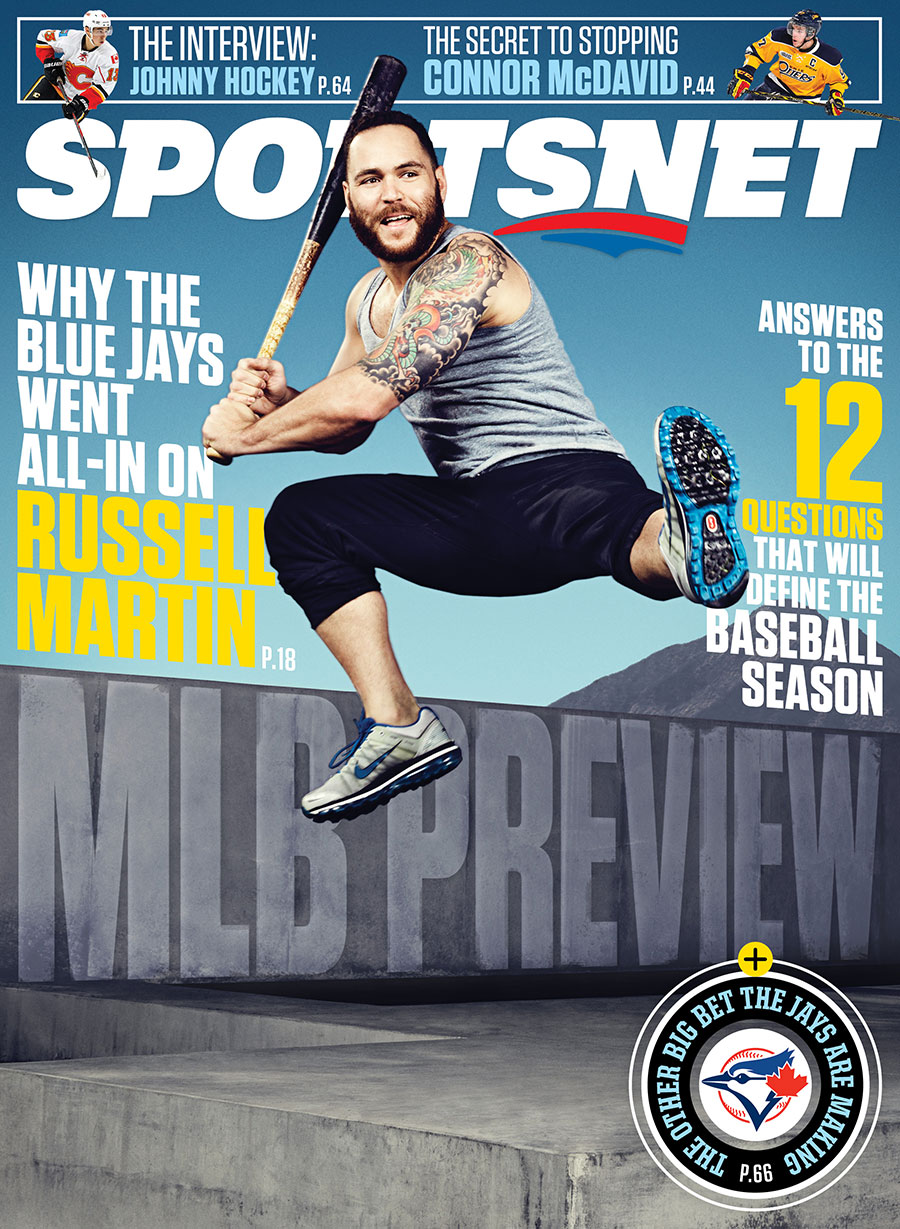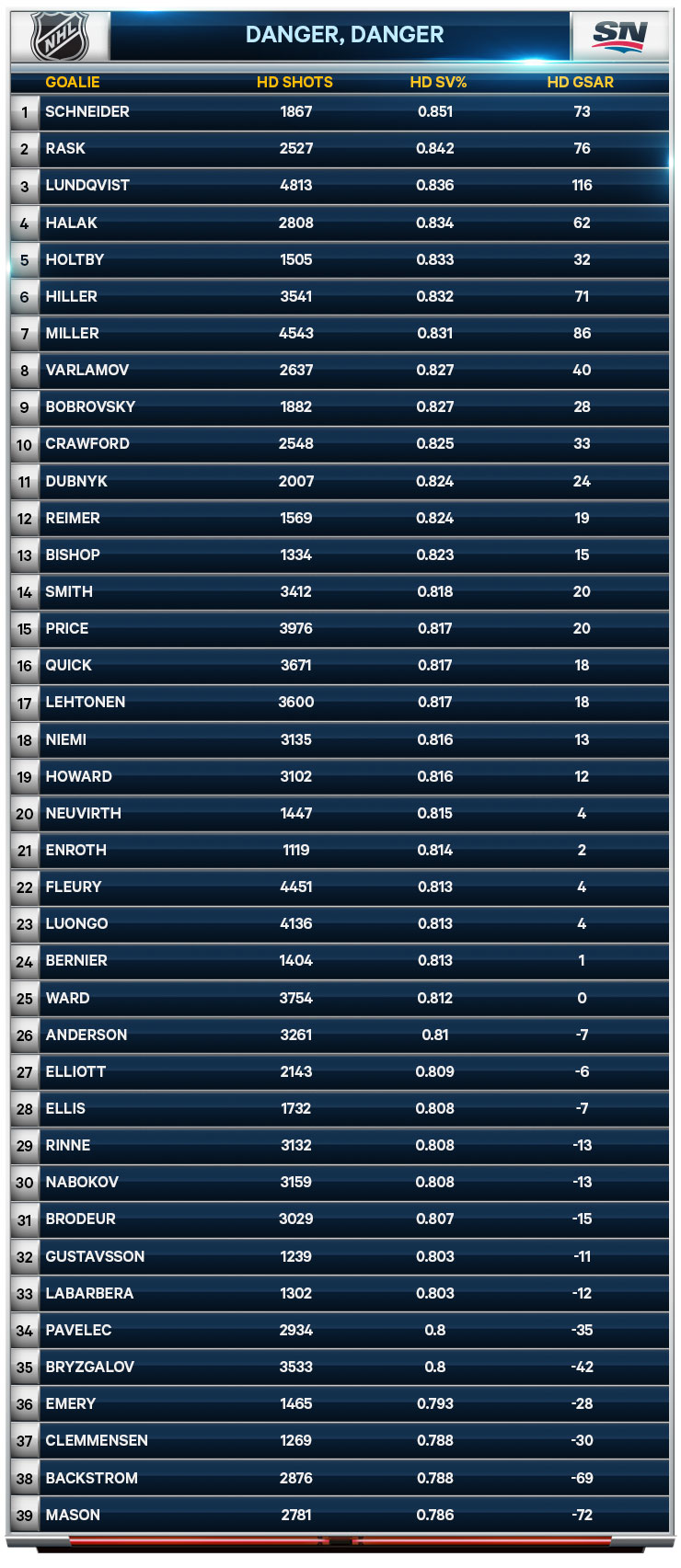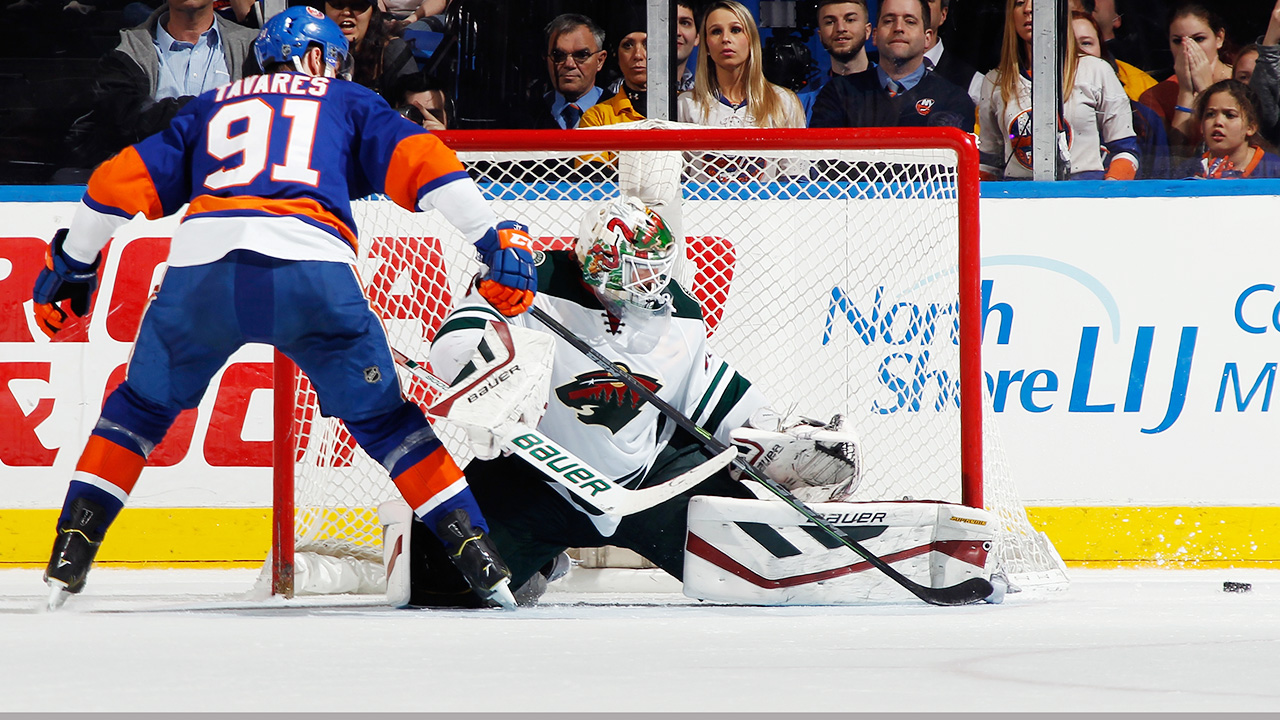Carey Price is having a year for the ages. There is no debating his huge impact on the performance of the Habs, and he is well deserving of the praise being sent his way. Price is on track to be the first goalie since Jose Theodore to be in serious contention for the Hart Trophy and is being compared in some circles to past greats like Patrick Roy and Dominik Hasek—though he is actually only having the ninth-best season relative to his peers since 1982 (Hasek recorded three of the top-five seasons relative to his peers).
With numbers comparable to Price since joining the Minnesota Wild, Devan Dubnyk has turned his career around in a way that very few pundits would have predicted. Dubnyk—also a first-round pick—had a decent history as the top goaltender in Edmonton prior to his numbers collapsing in 2013-14. But most observers agreed he was essentially finished as a starter after being moved to the Predators, then the Canadiens and on to AHL Hamilton before signing as a UFA backup option with Phoenix to begin this year.
Dubnyk posted solid numbers in limited action in the desert and then was acquired by Minnesota for a third-round pick in what many would describe as a desperation move by the Wild. He has since started every game and has lifted the Wild into a playoff spot, turning what had been the team’s main weakness into a key strength. In addition to ridiculous save numbers at even strength, Dubnyk’s work on the penalty kill is largely responsible for Minnesota’s top ranking in that regard.
 Sportsnet Magazine’s MLB Preview:
Sportsnet Magazine’s MLB Preview:
Why the Blue Jays went all in with Russell Martin, and answers to the 12 questions that will define the baseball season. Download it right now on your iOS or Android device, free to Sportsnet ONE subscribers.
How do two keepers coming from opposite ends of the recent-success spectrum end up in a similar place less than a year later? It’s a question NHL GMs must continually ask themselves.
Goaltending remains one of the more perplexing discussion points in NHL circles and the ability—or inability—to accurately assess goaltender value befuddles some organizations and rewards others. Goals-against average is essentially a team statistic. Wild variation in save percentage year-to-year is the norm for most goaltenders, and the nature of hot or cold streaks clouds tests the judgment of even the most tried and tested management groups.
Efforts by the analytical community to hone in on actual goaltending skill have most notably revolved around controlling for 5v5 or even-strength SV% to compare goalies on different teams to account for manpower variations. One of the main justifications for this is that 5v5 SV% is more repeatable and reliable than SV% in all situations. More recently, war-on-ice.com founders Andrew Thomas and Sam Ventura have separated shots into high-, medium- and low-danger (HD, MD, LD) in an attempt to provide more detailed information for assessing shooters and goaltenders. The shot-danger ratings are based on scoring probabilities from the NHL’s shot location data.

HD shots are dark green; MD shots are lime; LD shots are faint green. We then can add in shots off the rush and rebound shots as HD attempts. LD and MD shots are more noisy and random and less helpful in assessing skill. Those goals are more likely to be redirections, caroms, screens or weird bounces. They don’t provide as much meaningful information in assessing a goaltender’s ability.
The results indicate that because most goals tend to be scored from HD shots, goals resulting from LD and MD attempts are more random. Thus, while they occur most frequently and make up the largest component of a goaltender’s seasonal SV%, LD and MD shots are less reliable information sources, and are most prone to variation year to year.
The concept of “replacement level” and “above replacement” is predicated upon the skill level and results observed for players who have little to no value and cost virtually nothing to obtain. Replacement-level goalies would be emergency fill-ins, waiver claims or backups signed short-term for close to the NHL minimum. For the sake of argument, we can consider goalies who are 27 or older with contracts earning $600,000 or less replacement level due to how easily they can be obtained league wide.
Logically one would expect those guys to produce results well below league average. This is particularly true when you factor in that NHL goaltenders are contracted for a combined $188,181,000 in salary this season, with $130,964,000—or 70 percent—of that going to the 28 goalies with 40-plus games played. No. 1s get paid a lot of money—13 NHL teams pay theirs $6 million or more, and the average amongst the 40-plus game group is $4.7 million.
But based on the results for all NHL goalies since 2005-06, it’s not worth it.
The difference between the average elite starter and the average replacement-level goaltender is almost entirely based on HD SV%. There is literally no distinction in terms of average ability for each group on other shots. Most telling is the fact that league average SV% is essentially replacement level, so goaltending should be far cheaper to obtain than most teams seem willing to accept.

The HD SV% column is intriguing because it shows a clear correlation to pay grade, and is also the most repeatable of the three save percentages year over year. That means the best way to assess a goalie is his performance on HD shots.
By comparing a goaltender’s HD SV% to that of the average replacement level goaltender (.812), we can identify how many goals saved above replacement (GSAR) they have provided since 2007. The results shown are for all active goaltenders with over 1,000 HD shots faced. Dubnyk’s numbers are more impressive than Price’s.

This new information can shift the conversation to focus on the aspects of goaltending that provide a deeper look into who is performing at the highest levels, and can be used to more accurately assess which goaltenders are worth large pay days. From the looks of things, a number of those earning significant sums on long-term deals aren’t as valuable as their GMs have thought.

